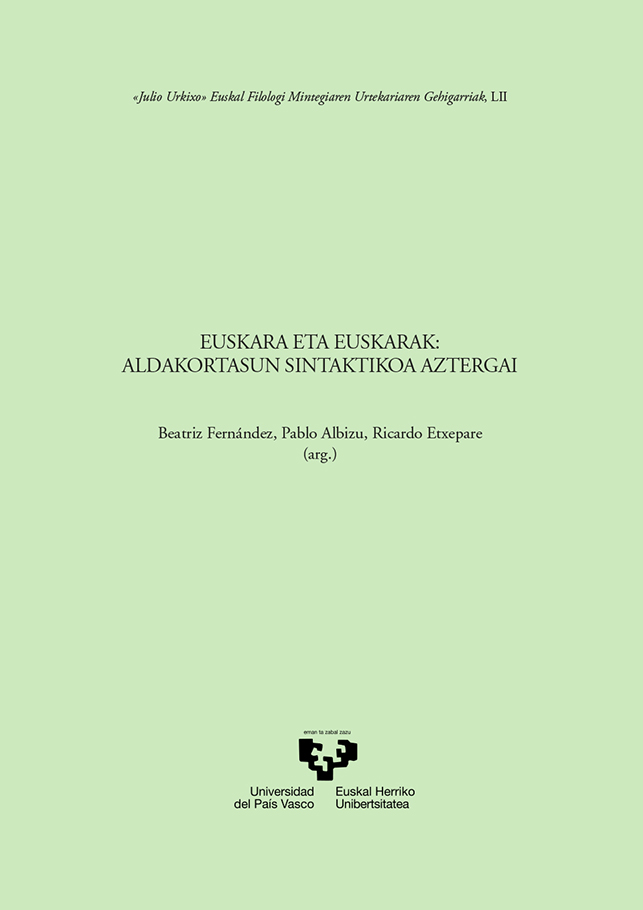Alineazio aldaketak euskararen diakronian
##plugins.themes.bootstrap3.article.main##
##plugins.themes.bootstrap3.article.sidebar##
Argitaratua
2010-02-21
Céline Mounole
Laburpena
This paper aims at giving some examples of alignment variations in the diachrony of the Basque language. As shown by Campbell & Harris (1995) and Creissels (2006, 2008), the reanalysis of light-verb constructions, of Tense, Aspect, Mood (TAM) periphrasis and the ellipsis of the term P in the transitive constructions are the main causes of the emergence of irregular alignments in the languages. Here, we present the syntactic evolution of the modal periphrasis (behar izan + partizipioa) 'to need to', (nahi izan + partizipioa) 'to want to', (gogo izan + partizipioa) 'to desire to', (gura izan + partizipioa) 'to desire to' and the aspectual structure (ari izan + V-ten) of Basque, from the 16th century to the 20th. The data make appear that the oriental dialects are the varieties of Basque which are more persistent in realigning the accusative alignments appeared by the reanalysis of those constructions. However, few of those realignment cases are systematic, that is to say, in the majority of the structures studied, the ergative and the accusative alignments fluctuate in modern Basque.
Nola aipatu
Mounole, Céline. 2010. «Alineazio Aldaketak Euskararen Diakronian». Anuario Del Seminario De Filología Vasca "Julio De Urquijo", otsailak, 151-69. https://doi.org/10.1387/asju.9877.
##plugins.themes.bootstrap3.article.details##
Atala
Artikuluak
Lan hau Creative Commons Aitortu-EzKomertziala-LanEratorririkGabe 4.0 Nazioartekoa lizentzia baten mende dago.


